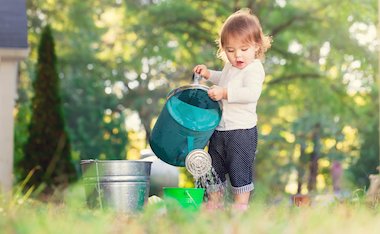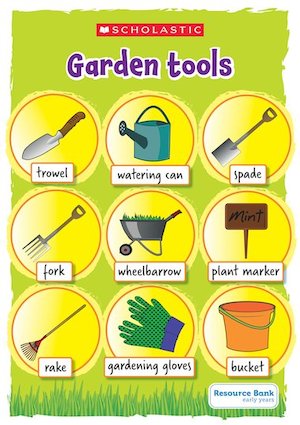Essential Experiences – Outdoors
Add to My Folder
The outdoor environment in an early years setting should be given as much importance as indoors. If you are fortunate in having plenty of garden space, you should ideally be aiming for seamless movement between indoors and outdoors. If, however, you are unable to provide constant access, you will need to focus on planning daily outdoor activities and getting the children outside as much as possible. Simply spending lots of time outdoors, whatever the weather, counts as an ‘essential experience’ for young children.

One way to increase the amount of time children spend outdoors is to regard the indoor and outdoor environments as an integrated whole. It can also be helpful to start blurring the distinction between what counts as an ‘indoor’ or ‘outdoor’ activity. Within reason, most traditional indoor activities work just as well outdoors, and taking indoor activities outside is a good way of getting children into the fresh air and daylight. You can also use familiar activities and resources as a bridge between the two spaces – particularly for those children who are reluctant to play outside. That said, when it comes to providing essential outdoor experiences, it’s useful to reflect on the unique and special aspects of being outside. How can we adapt, develop and create experiences that capitalise on the ‘great outdoors’ and all it has to offer?
The following list is just a starting point. What other essential outdoor experiences would you add? Let us know in the comments section!
Gardening
Gardening gives children an interactive experience of nature. Apart from offering lots of opportunity for sensory exploration, it also helps them discover the origin of the plant foods we eat.- Set aside a plot just for digging. Provide child-sized spades, trowels, forks, buckets and wheelbarrows, and let children discover how wet and dry soil behave. Name the tools and show children how to clean and store them safely.
- Upcycle items for growing plants (old wellies, sinks, catering tins) and create hanging baskets. Raised beds are a convenient height for children to work at and they protect plants from being stepped on.
- Help children discover that most plants need sunshine, soil and water in order to grow. Plan experiments, such as putting one seed in soil and leaving one exposed on the patio. Which seed grows into a plant?
- If you have room, allow some garden space to become a wilderness area. Explore what grows and lives there, and compare it with the cultivated garden. Talk about why it’s important to let some land grow naturally.
- Make compost in a Perspex-sided box, so children can see the waste decomposing. Help children to rake and sweep up leaves, and pack them in a bucket to create leaf mould.
- Link indoor and outdoor spaces by making bottle compost indoors, having pot plants indoors and bringing potted geraniums inside for the winter. Use garden vegetables for cooking activities.
- Muddy hands need washing, and the ‘before’ and ‘after’ are very obvious! Talk about the reasons for washing hands and practise the wetting, soaping, rinsing, drying sequence.
Already a member? Sign in below.
Published 13 July 2020
Reviews
You need to be signed in to place a review.










